How to Dry Herbs
Enjoy home-grown summertime flavor all year by learning how to dry herbs! We cover diverse methods, helpful tips and step-past-step instructions to learn how to make a fragrant herb fire starter.
For thousands of years, drying was the simply style to go on kitchen herbs from spoiling. Now, there are plenty of new products that keep herbs fresh and tricks to store fresh herbs for weeks. And so yous may be wondering, why should I acquire how to dry out herbs the former-fashioned way? The answer is simple: it's easy, cheap and can proceed herbs fresh for years. If yous're looking to go on herbs long-term, drying fresh herbs is the way to go.
How to Dry Herbs
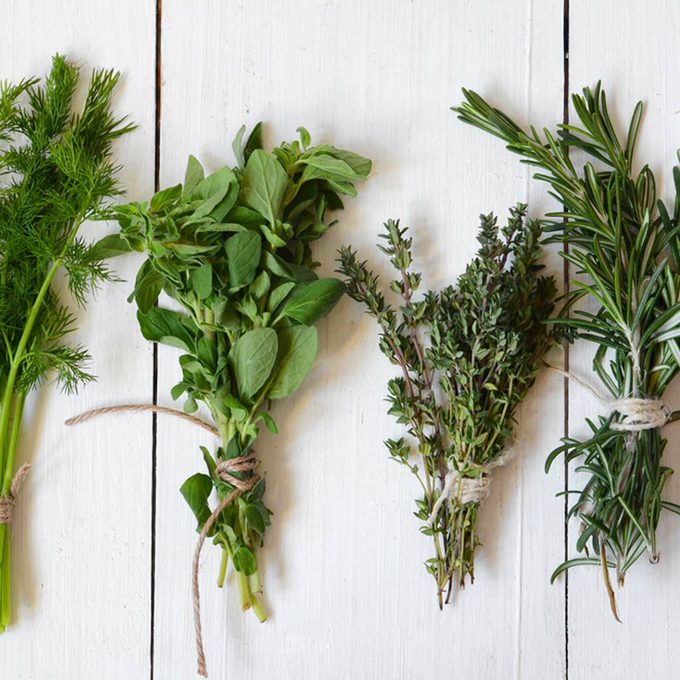
Getting Started
Timing is everything when it comes to drying herbs. They should be picked before the flowers develop and harvested on warm, dry mornings after the dew has evaporated. Because each herb grows differently, we recommend picking and preparing one variety at a fourth dimension.
To prep herbs, first you'll need to discard whatsoever damaged leaves. Then, strip large-leaved herbs, such as sage and mint, from their stalks. Leave small, feathery herbs, like dill and fennel, on the stalks until drying is complete.
Tarragon, bay, mint, lemon balm, lavender, rosemary and pocket-size-leaved herbs such as thyme take well to air-drying, then they are great for beginners.
Drying Methods
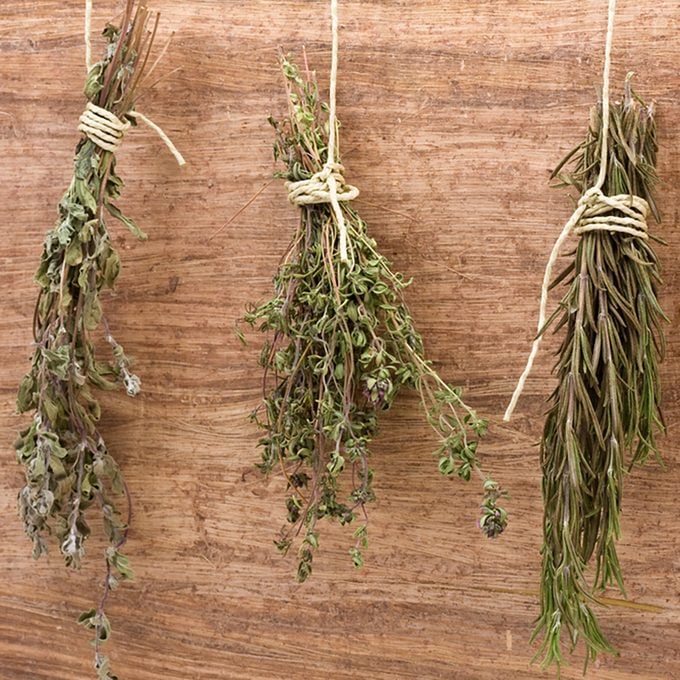
No matter which drying method you lot choose, effective drying relies on arable dry, fresh air more heat. A well-ventilated place out of direct sunlight is platonic. If yous live in a humid expanse, the process may exist slower, and mold can exist a trouble. If mold is an issue, we recommend using a minor commercial dehydrator.
Hanging Dry
To hang dry herbs, necktie sprigs or branches into small bunches (big, dense bunches can develop mold and discolored leaves). Hang the bunches upward to dry, leaves downward, wrapped loosely in muslin or thin newspaper bags to continue out dust and to catch falling leaves or seeds. Avert using plastic numberless considering of mold development.
Allow seven to x days to dry, depending on the size of the branches and humidity. Wondering if they're completely dry? If the leaves sound like crisp cornflakes when crushed, they're skillful to go.
You as well can air-dry herb seeds like fennel, parsley, caraway and coriander. Seed heads tend to ripen unevenly, so one time most of the head is brown, harvest it with nearly two anxiety of stem (or as long a stem as possible). Parcel iv to five stems together, then cover the heads with muslin or a paper bag and hang them upside down.
Rack Drying
Y'all tin can speed upwards drying past spacing out private sprigs or leaves of herbs on racks. To brand a drying rack, stretch muslin, cheesecloth or netting over a wooden frame and fix information technology in identify. Place the tray in an airing cupboard, in the warming drawer of an oven or in a warm, airy spot out of direct sunlight. Turn leaves frequently to ensure fifty-fifty drying, which should take two or three days.
Oven Drying
The leaves of herbs such equally sage, mint, rosemary, thyme and parsley, stripped from their stalks, are perfect for oven drying. Space out leaves on a muslin-covered tray in an oven gear up to the lowest possible temperature (higher temperatures diminish the fragrant essential oils) with the door ajar to allow moisture to escape. Turn the leaves over after thirty minutes to ensure even drying; they will be quite dry within an hour. Leave in the oven until absurd.
Microwave Drying
Microwaving works well when drying pocket-sized quantities of herbs. Separate the leaves from the stems, rinse if necessary and permit air dry. Place a unmarried layer of leaves on a paper towel on a microwave-safe plate. Lay another paper towel on top, and microwave on high for one minute. Watch closely, and cease if you aroma the herbs called-for. Continue heating at 30-second intervals, if needed, until the herbs are fully dry.
Storing and Using
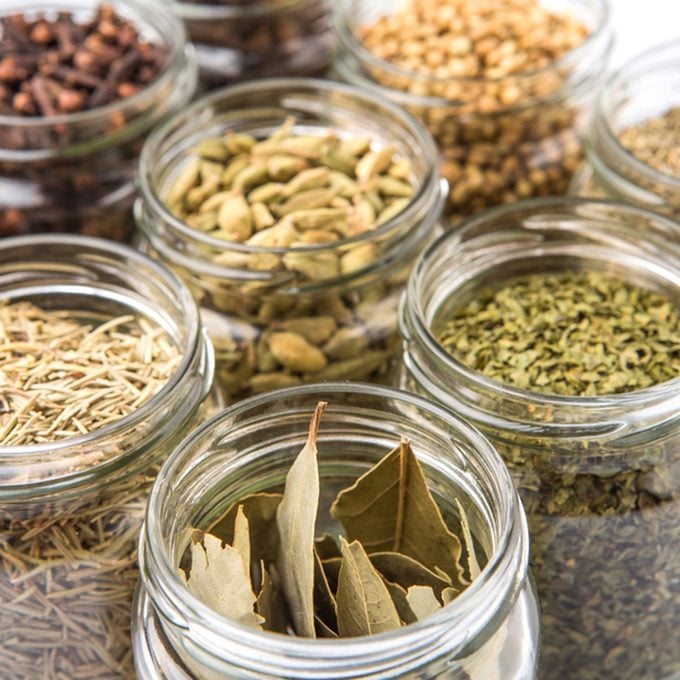
To store herbs, crumble the dried herbs with your fingers (discard the hard leafstalks and midribs) and store in small, airtight containers. If y'all use clear drinking glass containers, store them in a dark identify then the herbs don't lose their color.
Stale herbs are suitable for cooked foods, but recall: drying concentrates the flavors, so y'all don't demand to utilize as much in recipes. For example, if a recipe calls for one tablespoon of fresh herbs, utilise 1 teaspoon of dried herbs instead. Call up this flim-flam when using dried herbs in fresh herb recipes.
Making a Fragrant Fire Starter
To make an effluvious herb fire starter, get together former paper and an assortment of herbs. Sage, basil and rosemary piece of work well; experiment with your favorites. (If you lot have whatsoever basil left to spare, use it up in one of these like shooting fish in a barrel ways to use basil.) Then, wrap the herbs in a sheet of paper and secure the ends with raffia or cotton wool twine.
To use, constrict a few of the herb bundles underneath the log pile, allowing the newspaper ends to stick out. Lite the newspaper ends to start the burn. Equally the paper burns, the herbs will catch fire, igniting the logs and sending a lovely smell through the air.
Side by side up: Use your home-dried herbs in these lavender desserts.
Source: https://www.tasteofhome.com/article/how-to-dry-herbs/

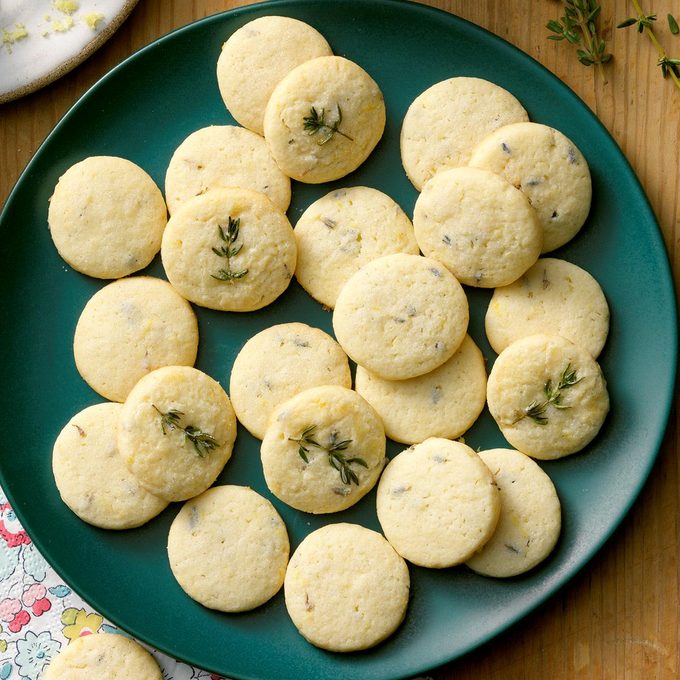
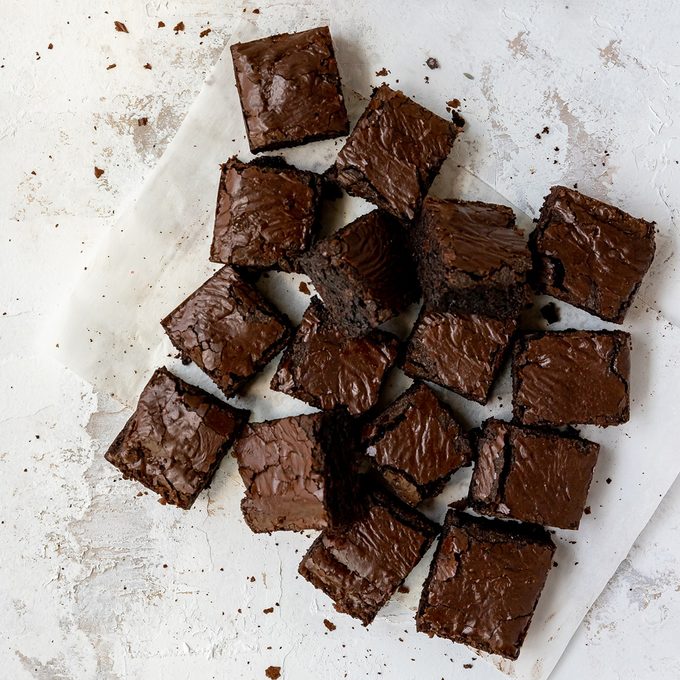


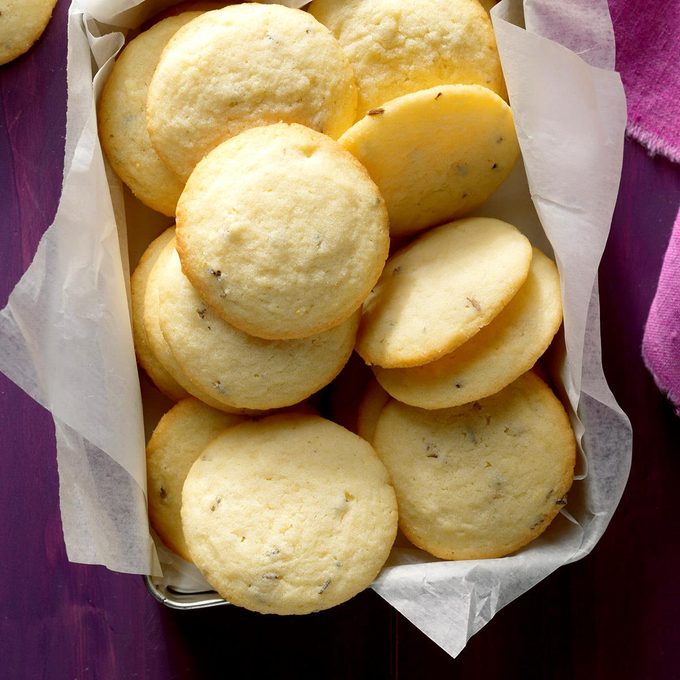
0 Response to "How to Dry Herbs"
Post a Comment